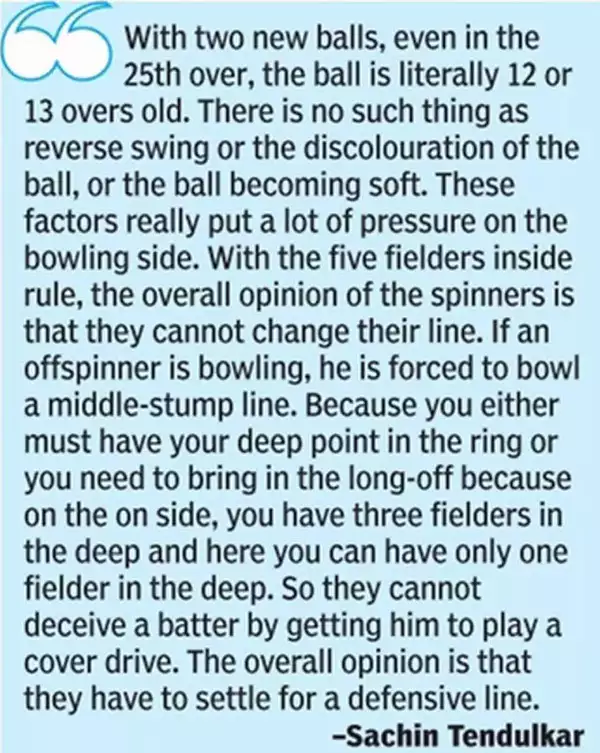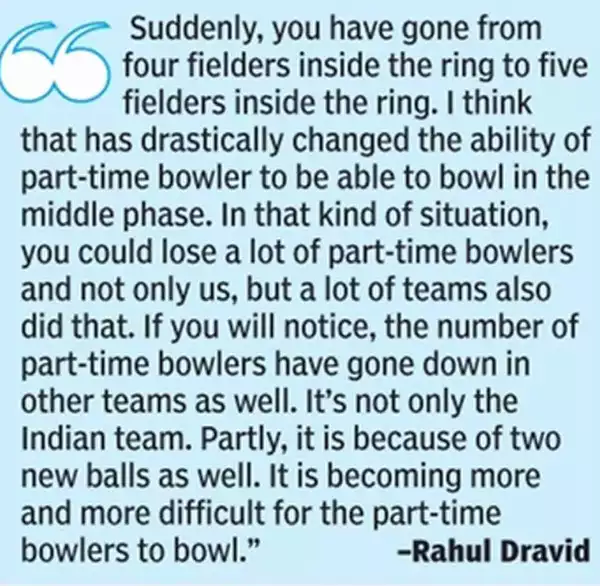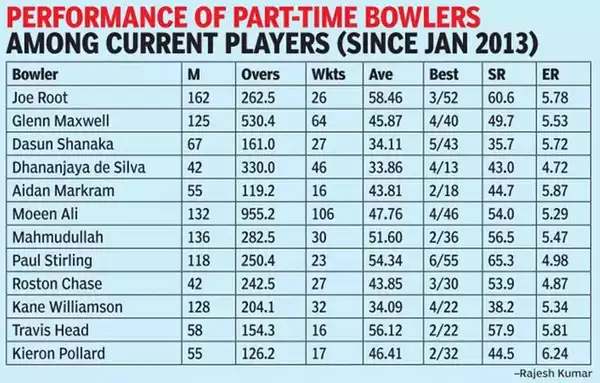In the ever-evolving world of cricket, the dynamics of the game have undergone significant transformations over the years. Changes in rules, the rise of power hitters, and restrictions on field placements have collectively diminished the role and impact of part-time bowlers in modern cricket. The days of iconic last-over victories, masterfully executed by part-time bowlers, seem to be fading away as the sport adapts to the demands of the contemporary era.
Part-Time Bowlers in the Spotlight
Reflecting on cricket history, one cannot forget the iconic 1993 Hero Cup semifinal where South Africa needed merely six runs to win with two wickets in hand. The stakes were high, and the pressure was intense. A young Sachin Tendulkar, just 20 years old at the time, made a pivotal move by approaching skipper Mohammed Azharuddin and requesting the ball. The rest, as they say, is history. Six deliveries later, India secured a heart-stopping two-run victory in a match that showcased the essence of cricket’s unpredictable nature.

Fast forward to September 25, 2002, in Colombo, where South Africa needed 21 runs off the last six balls to secure a victory against India and advance to the Champions Trophy finals. The tension was palpable, and the stage was set for another thrilling finish. Zaheer Khan had bowled nine exceptional overs, conceding only 27 runs. However, skipper Sourav Ganguly made a strategic decision by bringing in Virender Sehwag to bowl, a move that ultimately sealed a 10-run win for India. This instance emphasized the crucial role of captaincy and tactical decisions in shaping the outcome of a game.
Shifting Dynamics: Impact of Power Hitters and Fielding Restrictions
As we look ahead to the 2023 ICC Men’s Cricket World Cup, it’s evident that the dynamics of the game have shifted, impacting the usage of part-time bowlers. Unless the wicket strongly favors bowlers, captains are now more hesitant to rely on them, even during the middle overs. This change can be attributed to the rise of power hitters, the introduction of a new ball from each end, and the restriction of only four fielders allowed outside the thirty-yard circle from overs 11 to 40. These factors collectively create a vulnerable area on the field, waiting to be exploited by aggressive batters.

This paradigm shift essentially limits the bowler’s options, making it challenging for the fielding captain to protect both offside and leg-side boundaries for a significant portion of the innings. Indian off-spinner R Ashwin, who recently made a comeback to the Indian ODI side, expressed his belief that these rule changes were introduced to curtail India’s dominance in the limited-overs format. The alterations were aimed at breaking the stronghold of India’s spinners, who played a pivotal role in their success during that period.
However, statistics reveal an interesting trend. Certain top-order batters who also bowl finger-spin have performed admirably. Understanding the psychology of a batsman could be a key factor contributing to their success with the ball. On the other hand, part-time bowlers have faced challenges in consistently delivering in the T20 era. The rapidly evolving game demands a high level of proficiency, and taking a chance with part-time bowlers might not always yield the desired results.

Teams Prioritizing Bowling Strength
Teams like Australia and Pakistan understand this shift and load up with high-quality pace options, investing in their bowling arsenals to maintain a competitive edge. The presence of players like Mitchell Starc, Pat Cummins, Josh Hazlewood, Shaheen Shah Afridi, and Haris Rauf provides a sense of stability and reliability for the captains, alleviating the need to overly rely on part-time bowlers.
The changing dynamics of the cricketing world have placed part-time bowlers in a challenging position. While their contributions were significant in the past, the modern game demands a higher level of skill and consistency. With the rise of power hitters and the strategic constraints imposed by the rules, captains are increasingly turning to specialist bowlers to meet the demands of the game. The 2023 ICC Men’s Cricket World Cup will undoubtedly showcase the strategic shifts teams have made to adapt to these changing dynamics, emphasizing the need for a well-balanced and potent bowling attack in the pursuit of victory.



